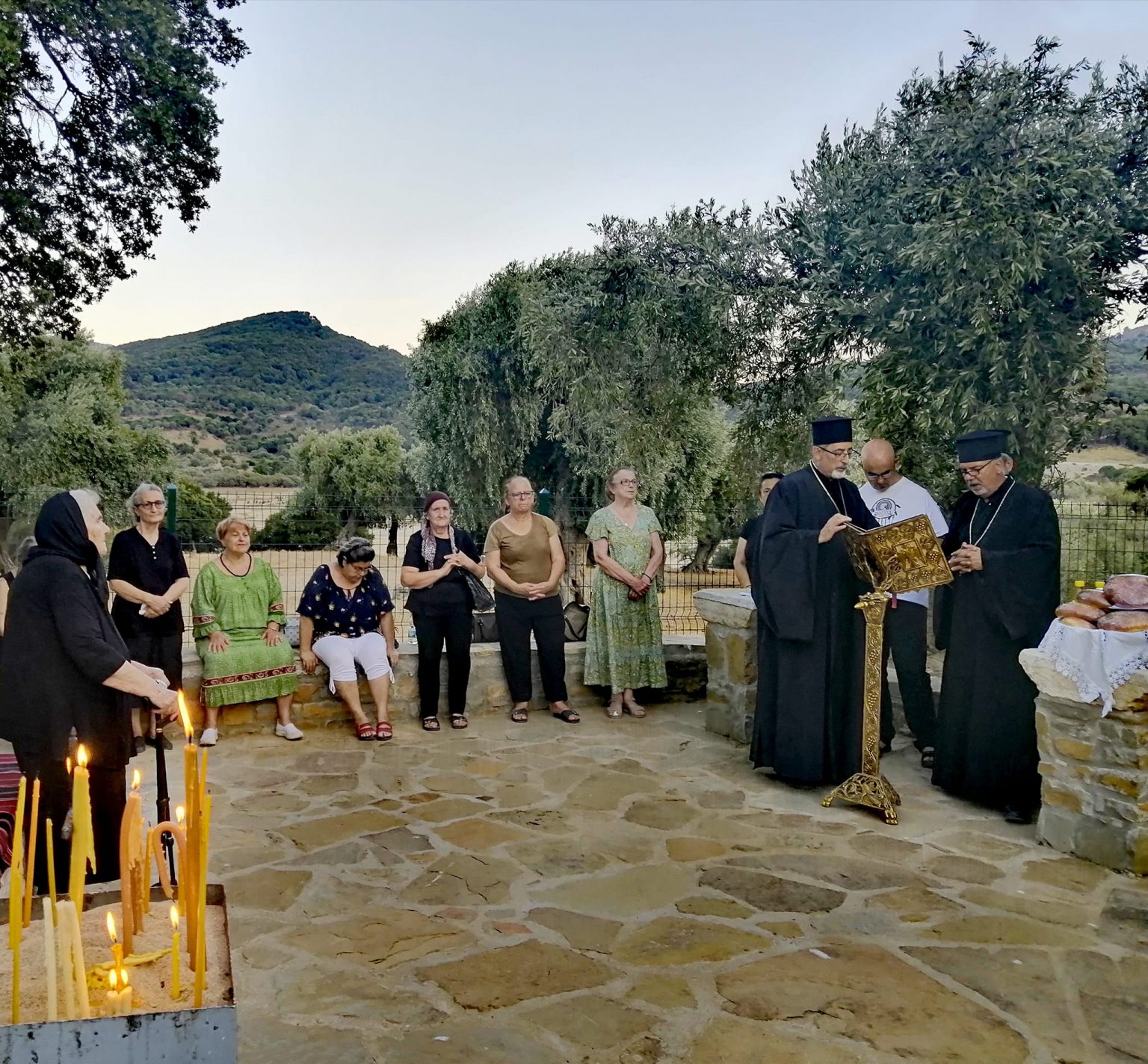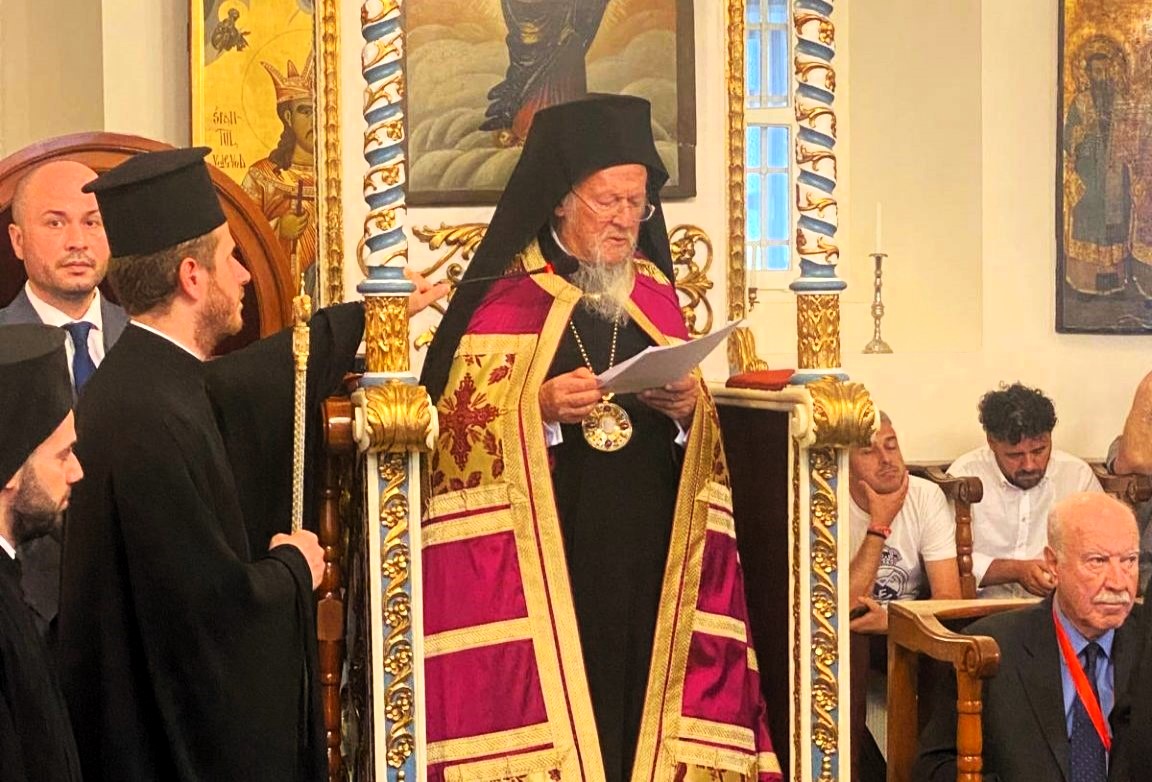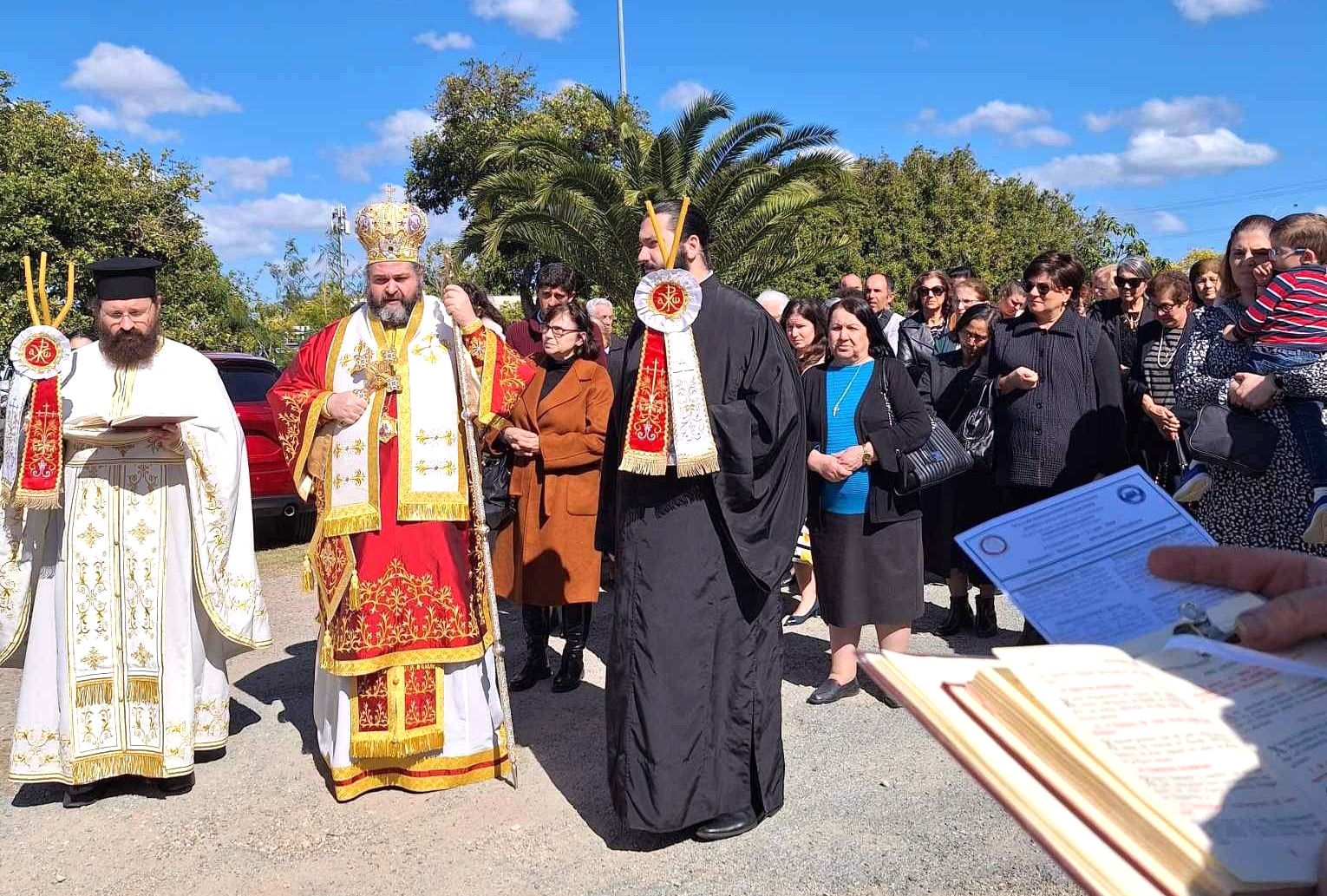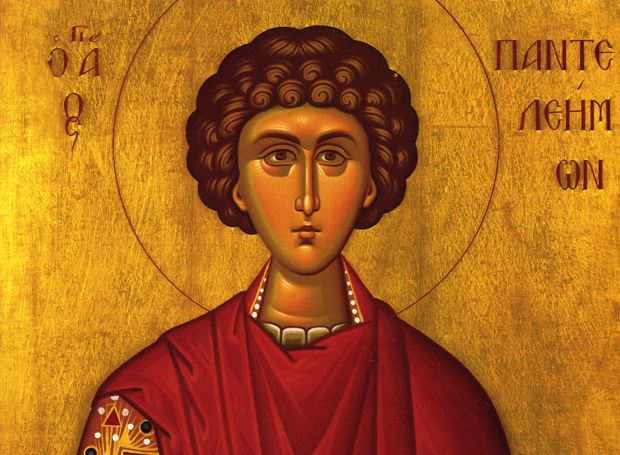Saint Porphyrius, Bishop of Gaza (26 February)
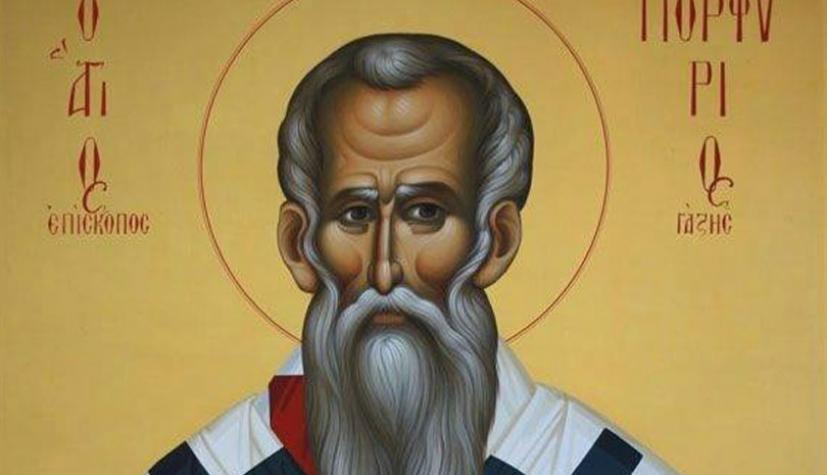

Saint Porphyrius, Archbishop of Gaza, was born about the year 346 at Thessalonica. His parents were people of substance, and this allowed Saint Porphyrius to receive a fine education. Having the inclination for monastic life, he left his native region at twenty-five years of age and set off for Egypt, where he lived in the Nitrian desert under the guidance of Saint Macarius the Great (January 19). There he also met Saint Jerome (June 15), who was then visiting the Egyptian monasteries. He went to Jerusalem on pilgrimage to the holy places, and to venerate the Life-Creating Cross of the Lord (September 14), then he moved into a cave in the Jordanian wilderness for prayer and ascetic deeds.
After five years, Saint Porphyrius was afflicted with a serious malady of the legs. He decided to go to the holy places of Jerusalem to pray for healing. As he lay half-conscious at the foot of Golgotha, Saint Porphyrius fell into a sort of trance. He beheld Jesus Christ descending from the Cross and saying to him, “Take this Wood and preserve it.”


Coming out of his trance, he found himself healthy and free from pain. Then he gave away all his money to the poor and for the adornment of the churches of God. For a time he supported himself by working as a shoemaker. The words of the Savior were fulfilled when the saint was forty-five years old. The Patriarch of Jerusalem ordained Saint Porphyrius to the holy priesthood and appointed him custodian of the Venerable Wood of the Cross of the Lord.
In 395 the bishop of the city of Gaza (in Palestine) died. The local Christians went to Caesarea to ask Metropolitan John to send them a new bishop who would be able to contend against the pagans, which were predominant in their city and were harassing the Christians there. The Lord inspired the Metropolitan to summon the priest Porphyrius. With fear and trembling the ascetic accepted the office of bishop, and with tears he prostrated himself before the Life-Creating Wood and went to fulfill his new obedience.
In Gaza there were only three Christian churches, but there were a great many pagan temples and idols. During this time there had been a long spell without rain, causing a severe drought. The pagan priests brought offerings to their idols, but the woes did not cease. Saint Porphyrius imposed a fast for all the Christians; he then served an all-night Vigil, followed by a church procession around the city. Immediately the sky covered over with storm clouds, thunder boomed, and abundant rains poured down. Seeing this miracle, many pagans cried out, “Christ is indeed the only true God!” As a result of this, 127 men, thirty-five women and fourteen children were united to the Church through Holy Baptism, and another 110 men soon after this.
The pagans continued to harass the Christians. They passed them over for public office, and burdened them with taxes. Saint Porphyrius and Metropolitan John of Caesarea journeyed to Constantinople to seek redress from the emperor. Saint John Chrysostom (September 14, January 27 and 30) received them and assisted them.
Saints John and Porphyrius were presented to the empress Eudoxia who was expecting a child at that time. “Intercede for us,” said the bishops to the empress, “and the Lord will send you a son, who shall reign during your lifetime”. Eudoxia very much wanted a son, since she had given birth only to daughters. Through the prayer of the saints an heir was born to the imperial family. As a result of this, the emperor issued an edict in 401 ordering the destruction of pagan temples in Gaza and the restoration of privileges to Christians. Moreover, the emperor gave the saints money for the construction of a new church, which was to be built in Gaza on the site of the chief pagan temple.


Saint Porphyrius upheld Christianity in Gaza to the very end of his life, and guarded his flock from the vexatious pagans. Through the prayers of the saint numerous miracles and healings occurred. The holy archpastor guided his flock for twenty-five years, and reposed in 420 at an advanced age.
Saint Porphyrius had Thessalonica as his homeland. He became a monk in Scete of Egypt, where he lived for five years. He went on pilgrimage to Jerusalem, after which he spent five years in much affliction in a cave near the Jordan. Stricken with a disease of the liver, he departed to Jerusalem, where he was ordained presbyter and appointed Keeper of the Cross at the age of 45. Three years later he was made Bishop of Gaza. He suffered much from the rulers and pagans of Gaza; but with the friendship of Saint John Chrysostom, and the patronage of the Empress Eudoxia, he razed the temple of the idol Marnas in Gaza and built a great church to the glory of God. He reposed in 450.
This great archpastor was born of wealthy parents in Thessalonica. From his youth until age twenty-five, Porphyrius remained in his birthplace. Afterward he left his parents and worldly life and withdrew to the wilderness of Egypt. Under the guidance of an experienced spiritual father, the young Porphyrius was tonsured a monk and remained there for five years. He then visited the Holy Land in the company of the monk Mark, his faithful companion. In the proximity of Jerusalem he lived as an ascetic in a cave, again for five years. But then Porphyrius’s legs became weak, and he was unable to walk. Nevertheless, crawling on his knees, he continually attended the divine services. One night the Lord appeared to him in a vision and cured the infirmity in his legs, and he became completely whole. When he was elected Bishop of Gaza, Porphyrius accepted this obligation with a heavy heart.
In Gaza he found only 280 Christians. All the other inhabitants were fanatical idolaters. Only by his great faith and patience did Porphyrius succeed in converting the inhabitants of Gaza to the Christian Faith. He personally traveled to Constantinople to see Emperor Arcadius and Patriarch John Chrysostom, to seek their support in this unequal struggle with the idolaters. He received the desired support. The idolatrous temples were closed and the idols destroyed; then he built a beautiful church with thirty marble columns. Empress Eudocia especially assisted in the building of this church. Porphyrius lived long enough to see the entire town of Gaza converted to the Christian Faith, but only after many struggles, sufferings and prayerful tears to God. He died peacefully in the year 421 A.D. He was a miracle-worker both during his life and after his death. Even today, his relics repose in Gaza.
Apolytikion of Porphyrius, Bp. of Gaza
Fourth Tone
A model of faith and the image of gentleness, the example of your life has shown you forth to your sheep-fold to be a master of temperance. You obtained thus through being lowly, gifts from on high, and riches through poverty. Porphyrios, our father and priest of priests, intercede with Christ our God that He may save our souls.
Kontakion of Porphyrius, Bp. of Gaza
Second Tone
Arrayed with a most sacred life, thou wast adorned with the priestly vestment, O all-blessed and godly-minded Porphyrius; and thou art conspicuous for miracles of healing, interceding unceasingly for us all.
Source: oca.org / goarch.org / westserbdio.org

